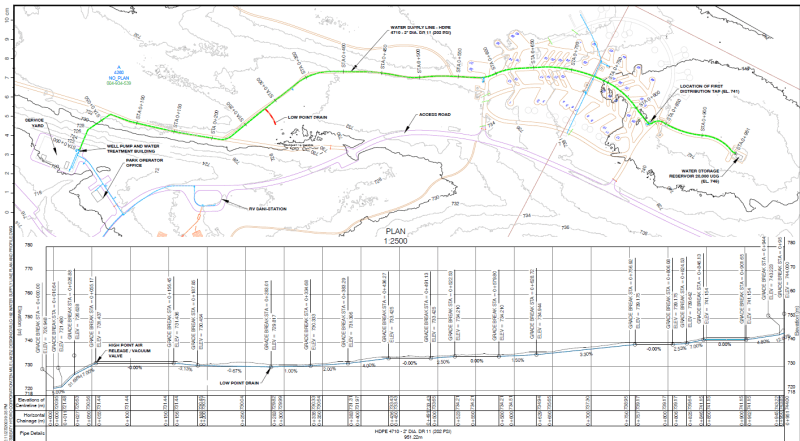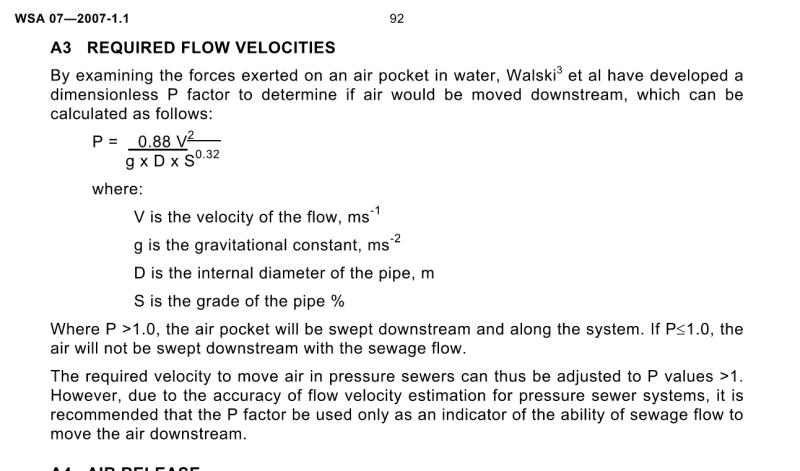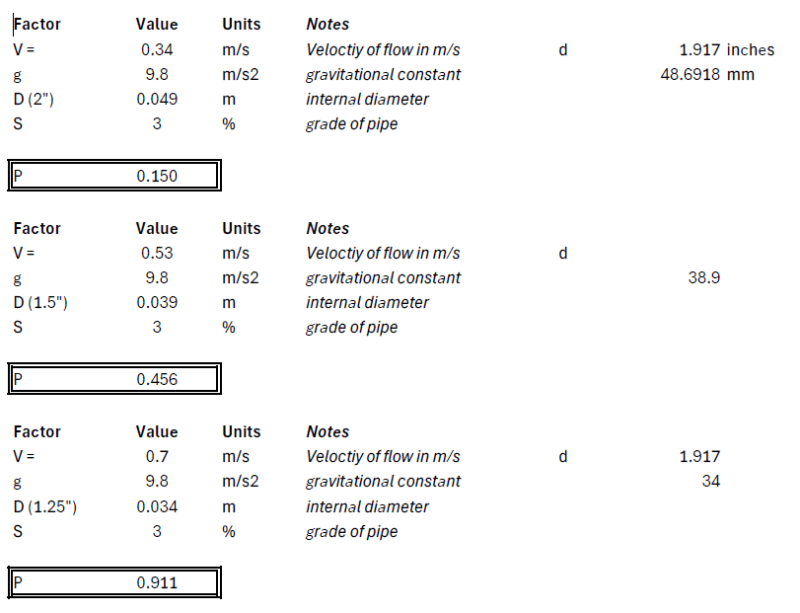Dersnerman
Mechanical
- Nov 29, 2018
- 21
Hello All!
I could use some feedback on the following application. I'm wondering what I need in terms of air valves for this 1km long, small diameter, low pressure pipeline. Drawing attached.
1) 2" diameter, 1km long pipeline. 2 high points where air can collect. Q = 10 GPM.
2) Same as above except 4" diameter, Q = 50 GPM.
Working pressures won't be more than 50 psi.
These are obviously very small diameter pipelines. I'm wondering:
a) What would you recommend for air valves? Standard practice and literature would dictate I need a combination air valve at every high point. However, in practice I've seen many similar small pipeline applications where no air valves exist at all. Most of the air will be evacuated through the end of the pipeline on system startup, but there could be some pockets left at high points.
b) should I be concerned with entrained air buildup at highpoints? How long does it typically take for entrained air to gather at high points? This pipeline is in operation for about 4 months and drained yearly.
I could use some feedback on the following application. I'm wondering what I need in terms of air valves for this 1km long, small diameter, low pressure pipeline. Drawing attached.
1) 2" diameter, 1km long pipeline. 2 high points where air can collect. Q = 10 GPM.
2) Same as above except 4" diameter, Q = 50 GPM.
Working pressures won't be more than 50 psi.
These are obviously very small diameter pipelines. I'm wondering:
a) What would you recommend for air valves? Standard practice and literature would dictate I need a combination air valve at every high point. However, in practice I've seen many similar small pipeline applications where no air valves exist at all. Most of the air will be evacuated through the end of the pipeline on system startup, but there could be some pockets left at high points.
b) should I be concerned with entrained air buildup at highpoints? How long does it typically take for entrained air to gather at high points? This pipeline is in operation for about 4 months and drained yearly.



